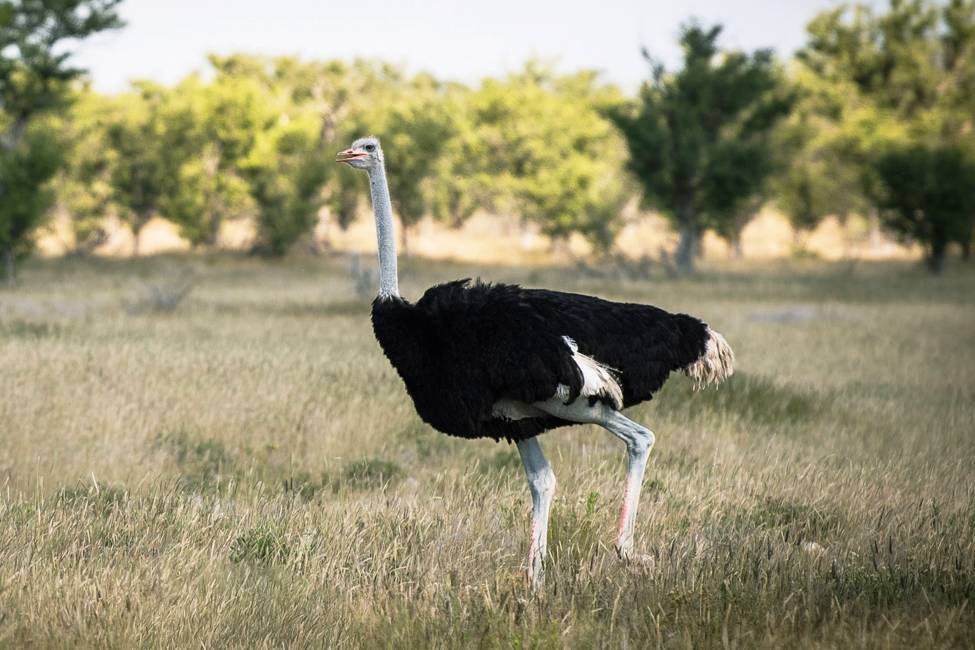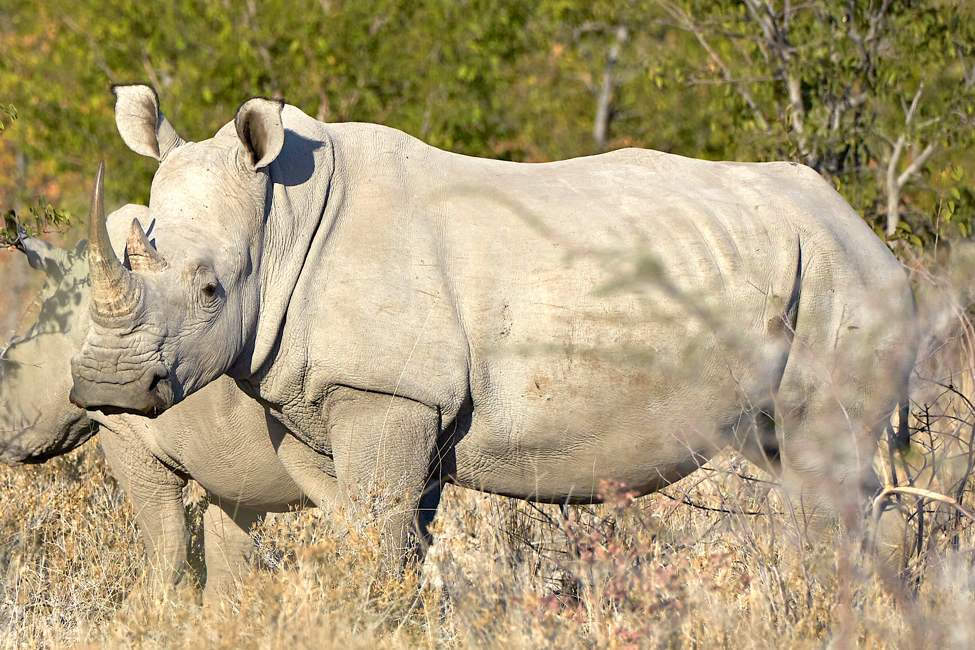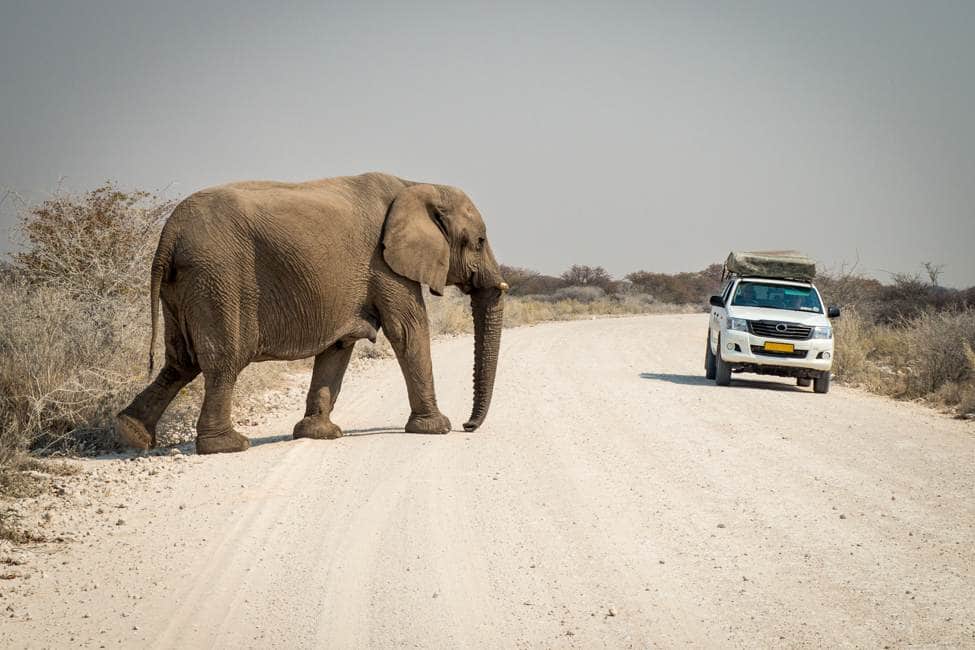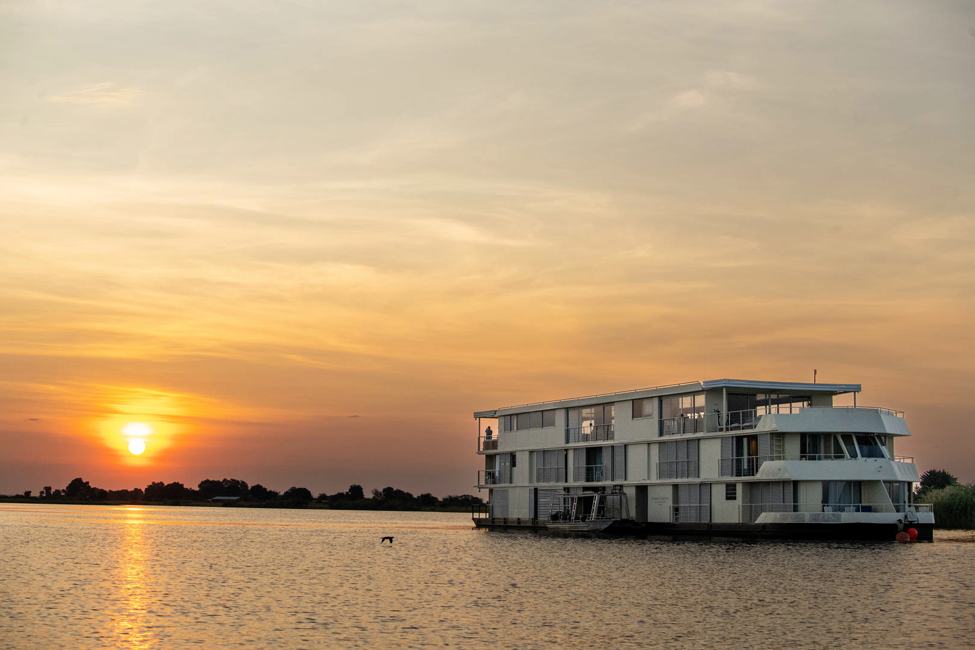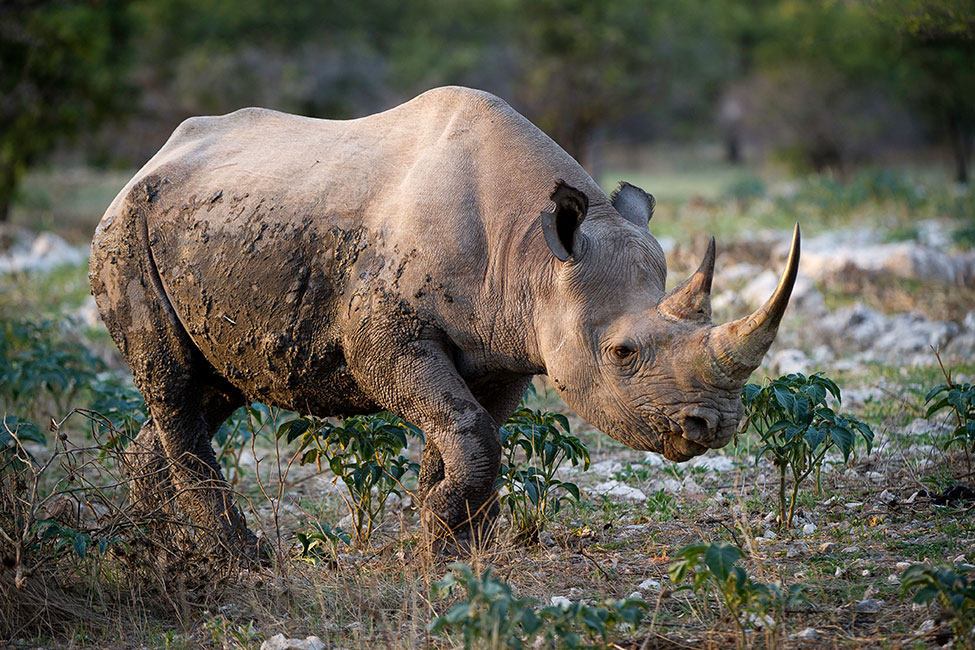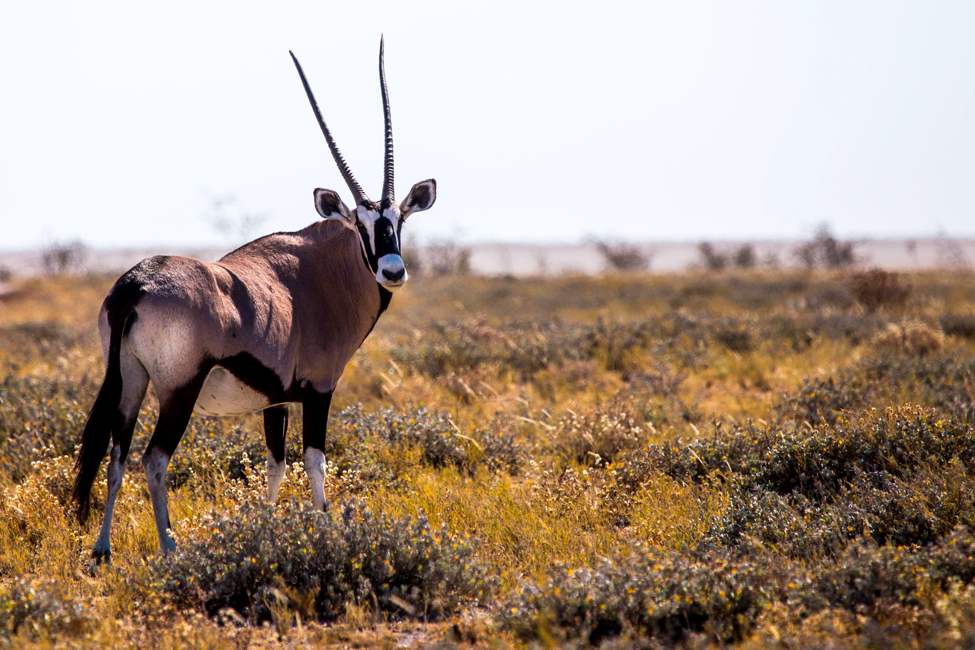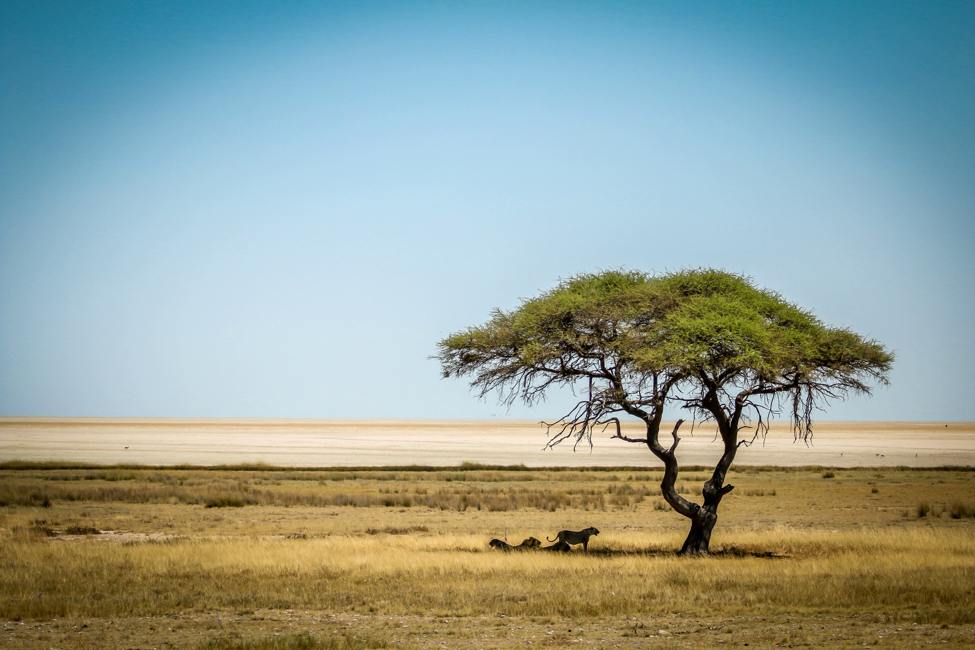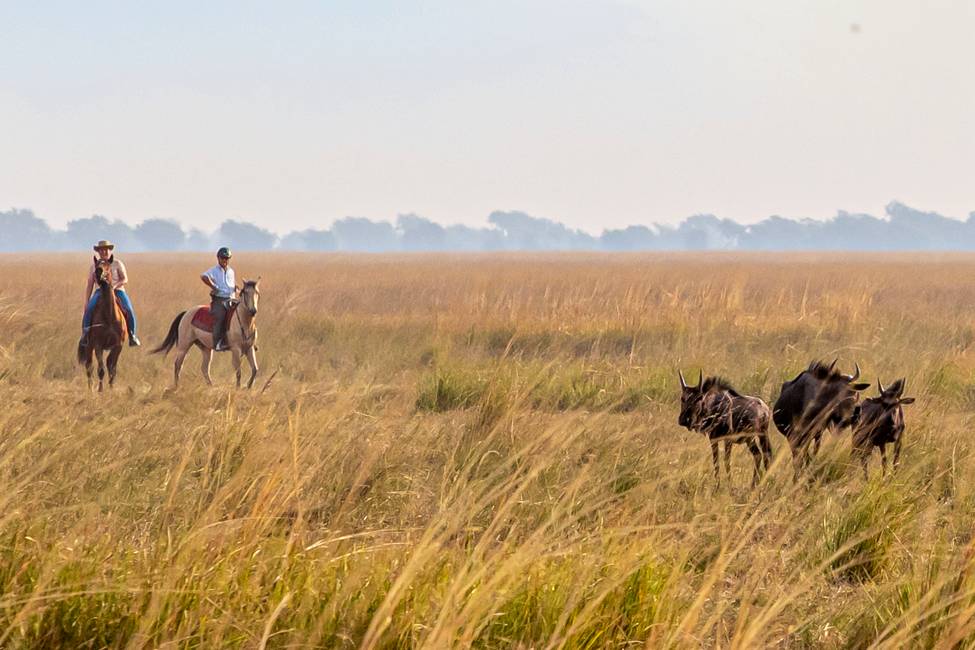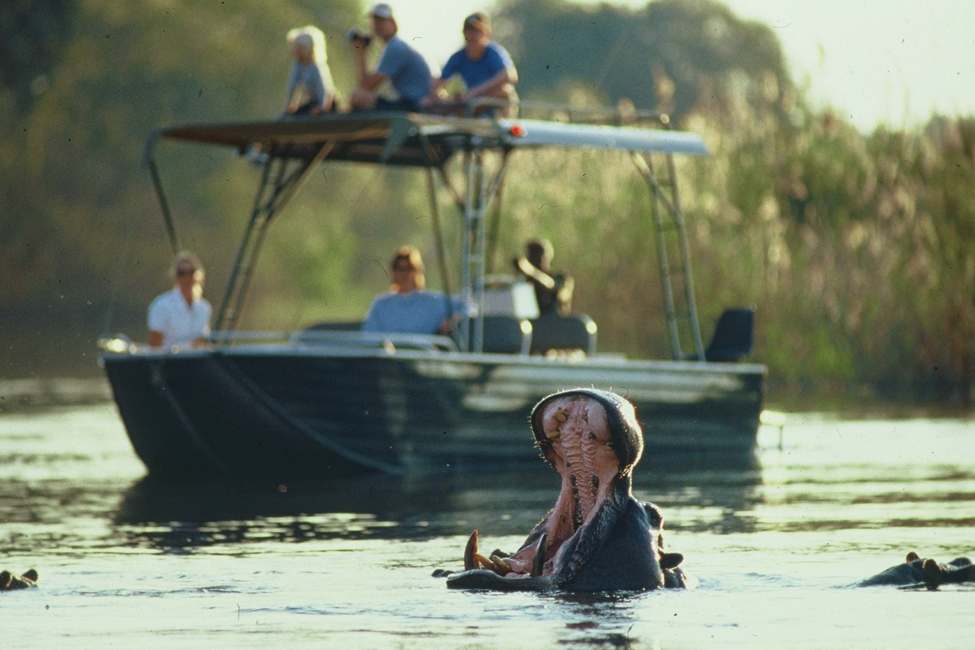Lions laze under a mopane tree on the edge of Etosha Pan. Photo by Tarry Butcher.
The Wonders of Etosha National Park
Covering 8,600 square miles in northwestern Namibia, Etosha National Park offers a premier wildlife viewing experience. The park’s diverse landscape ranges from dense woodlands and dolomite hills to vast plains, attracting a variety of wildlife.
Perhaps the park’s most famous feature is the shimmering salt flat of the Etosha Pan. Encompassing a quarter of the park’s land, the Etosha Pan is the remnant of an ancient lake. When it evaporated 3 million years ago, the lake left behind salts that turned the soil white. In fact, the name “Etosha” comes from a word in the local Oshindonga language that means “great white place.”
Nowadays, the Etosha Pan fills with water only after summer rains, when shallow saline waters attract large flocks of pelicans and colorful flamingos to this dramatic landscape.
Etosha is dry through most of the year, and no river runs through it to sustain wildlife. (Hwange in Zimbabwe is the only other African national park without a river in its boundaries.) Nonetheless, the park boasts some of the tallest elephants in Africa, as well as giraffes, rhinos, lions, leopards, caracals, brown and spotted hyenas, aardwolves, meerkats, plains and mountains zebras, and a wide variety of antelopes, from tiny Damara dik-diks to imposing oryxes.
Much of this diversity is thanks to natural springs and waterholes throughout the park that animals flock to during dry weather.
Overall, Etosha has 114 mammals, 110 reptiles, and more than 340 bird species. There’s a lot to see in this park!
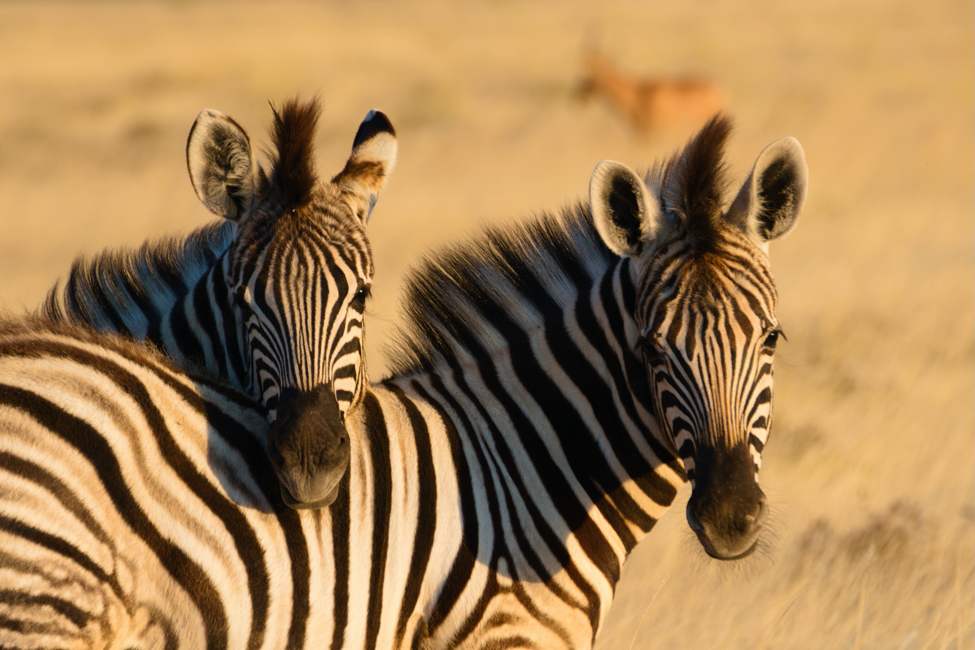
A pair of plains zebras rests in the grasslands of Etosha National Park. Photo by Valeria Hutter.
What to See in Etosha National Park
Etosha National Park stretches for hundreds of miles from east to west. Besides salt pans, the park consists of grasslands featuring salt-tolerant grasses and shrubs, savannas dotted with acacia trees, and extensive mopane woodlands.
The park is divided into three regions with distinct landscapes and plant life: Etosha East, Etosha South, and Etosha West.
Etosha East
Etosha East encompasses the eastern and north-central part of the park, which includes the Etosha Pan and two smaller salt pans. Vast semi-arid savanna and grasslands surround the pans, and watering holes dot the landscape.
Here, you have an excellent chance of seeing four of the Big Five—lions, elephants, black rhinos, and leopards. You’ll also find giraffes and a variety of elegant antelopes. As for birds, ostriches, eagles (the park boasts six species), hornbills, and many more can be spotted year-round, while shorebirds such as flamingos and pelicans visit during high water in the summer.
On the eastern border of the park lies Onguma Safari Camps, a reserve covering 130 square miles with both lodge and luxury camping options. This area is a favorite among photographers for its beautiful landscapes, diverse wildlife, and the Onkolo Hide—a protected photography spot located right at ground level next to the Onkolo waterhole. It’s a great spot for capturing unique animal portraits. Learn more about photographic hides.
Game drives are an ideal way to explore eastern Etosha. Another possibility is a horseback riding safari, which are usually scheduled in the dry season to take advantage of the open plains formed by the salt pans. Bush walks and sundowner cocktails in the wilderness can be enjoyed in Onguma.
Check out our sample Namibia Self-Drive Safari itinerary to see what a visit to Etosha East could look like.
Etosha South
In Etosha South, you will find open savanna and edged by the Leopard Hills, dolomite hills that are locally known as Ondundozonananandana. (That’s a mouthful!)
Visitors to the southern part of Etosha might see lions, giraffes, elephants, white and black rhinos, and a multitude of plains game. You have the option of lodging in the park itself or in neighboring Ongava Private Game Reserve, which lies right on Etosha’s southern boundary next to the Andersson’s Gate entrance and is one of the lodgings in our Black Rhino Conservation Safari. Ongava expands the protected area and offers luxury accommodations with incredible views of the landscape.
An activity unique to this area is tracking rhinos on foot—a thrilling experience that brings you into the thick of Etosha’s wild expanse. Other options include game drives, guided nature walks, and watching the sun rise or set over the magnificent southern Etosha landscape.
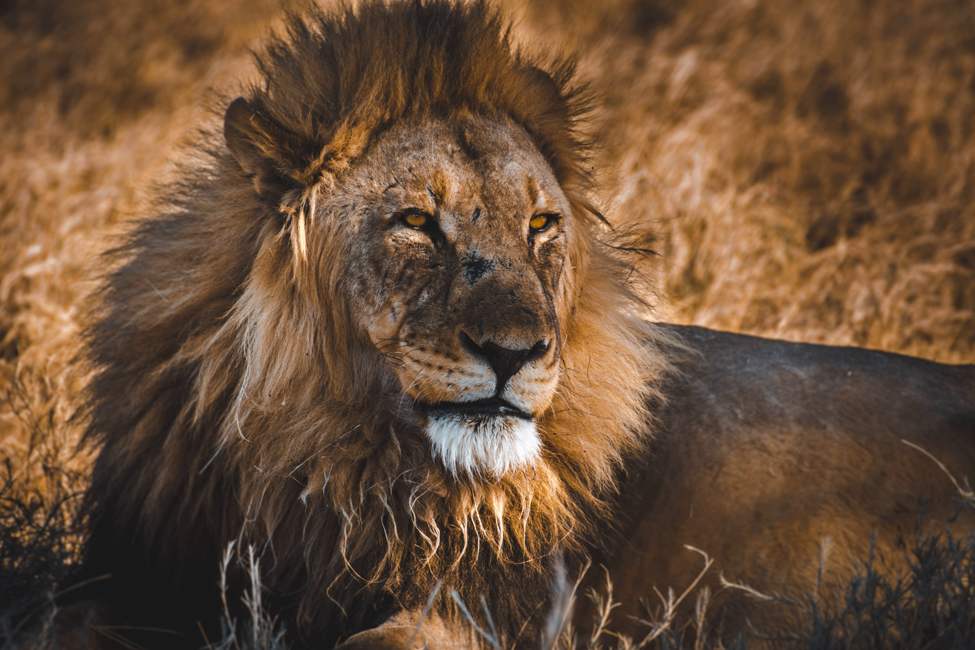
Lions spend most of the day at rest to save energy for the hunt. Photo taken in Etosha National Park by Sergi Ferrete.
Etosha West
While southern Etosha has a few hills, go to western Etosha for a truly undulating landscape. The western hills are famous for their seasonal flower displays and are the only place in Etosha to see Hartmann’s mountain zebra.
In addition to mountain zebras, you may see black rhinos and black-faced impalas, as well as elephants, leopards, lions, springboks, gemsboks (Southern African oryxes), and red hartebeests.
Etosha West has fewer visitors than the southern and eastern portions of the park, so it’s ideal for travelers looking for a remote, away-from-the-world experience.
Explore Namibia on These Safaris
When to Visit Etosha
Etosha National Park has much to offer year-round. However, winter temperatures are milder. (Remember, winter in Namibia takes place at the same time as summer in the United States.)
From April to September in Etosha, daytime temperatures can reach around 85°F, then typically drop to the mid-fifties—although nighttime freezes aren’t unheard of! Rain is rare in winter.
Wildlife spotting is often easier in the winter because the lack of rain means animals concentrate more densely around watering holes.
In summer, animals are more spread out. Temperatures can go as high as 105°F during the day, but typically hover in the nineties. The nights are much cooler, typically around 65°F. Rain is more common, but still sparse.
Summer is the time to visit if you want to see the flooded salt pans and the many shorebirds they attract.
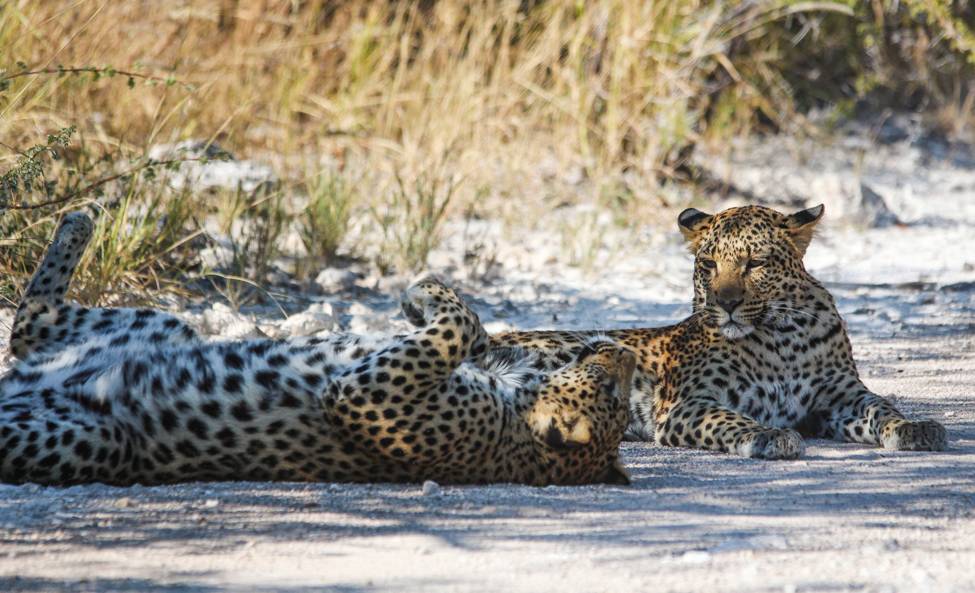
Leopards enjoy lounging around in Etosha National Park. Photo by Sophia Louw.
Getting to Etosha
Etosha National Park is easy to get to by land. The roads in the park and leading to it are well-maintained. In eastern Etosha, they are easily navigated by regular cars—four-wheel drive is not necessary—and there are many gas stations within the park.
So if you’re comfortable driving on the left side of the road in a foreign country, you could rent a car and drive there yourself. Of course, there are other options as well, such as flying in on a charter plane or hiring a driver. We discuss these options in detail in Getting Around on Your Namibian Safari.
Planning Your Etosha Safari
Ujuzi can help you plan your travel to and from Etosha, as well as make arrangements for you while you’re there. Although you’re in the wild, you don’t have to rough it. Four- and five-star luxury accommodations are plentiful within the park itself and on the neighboring private reserves.
Want to learn more? Contact Ujuzi to explore travel to Namibia!
Sign up for the Ujuzi Newsletter!
From top travel tips to innovative safaris and conservation movement, get inspired to plan your next African safari!
By submitting this form, you are consenting to receive marketing emails from: . You can revoke your consent to receive emails at any time by using the SafeUnsubscribe® link, found at the bottom of every email. Emails are serviced by Constant Contact


